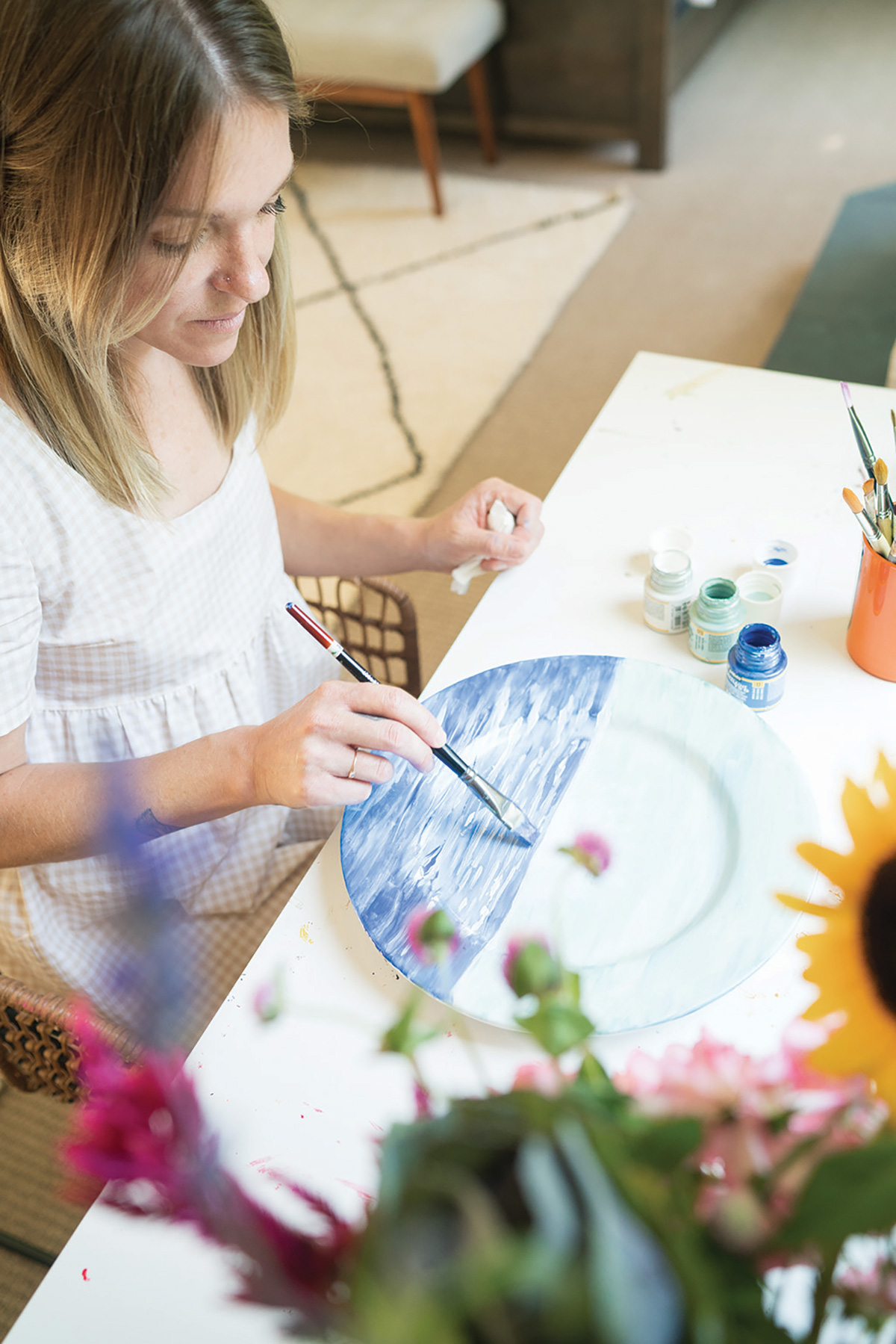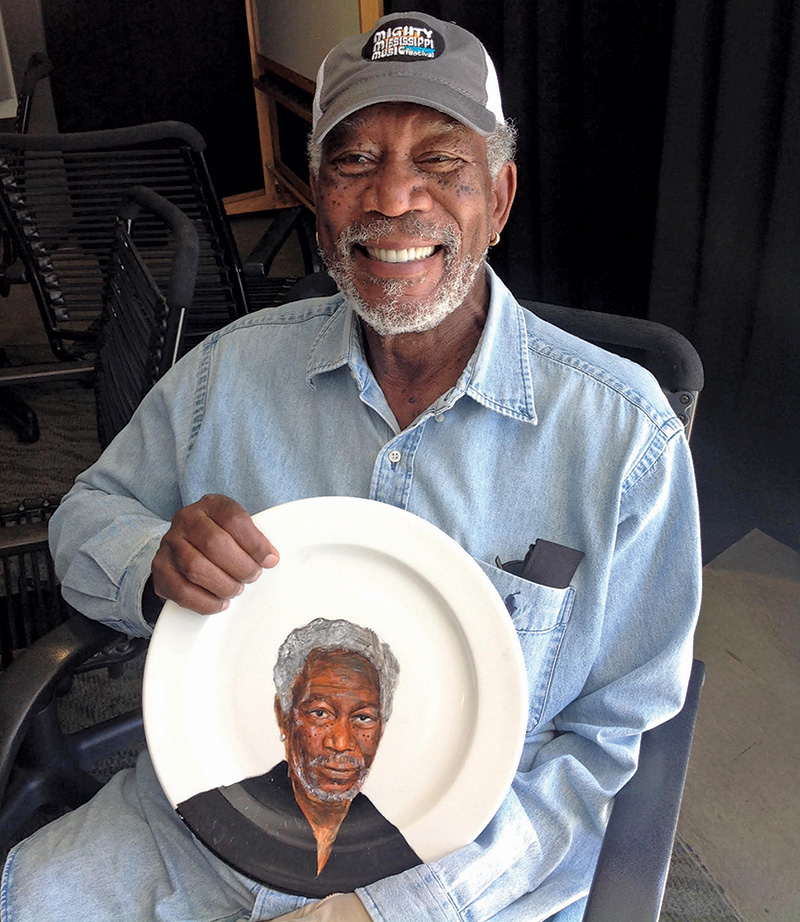Collingwood artist Jacqueline Poirier, a.k.a. The Crazy Plate Lady, serves up deliciously creative and witty paintings on charger plates for any occasion, appetite or wall.
by Dianne Rinehart // photography by Anya Shor
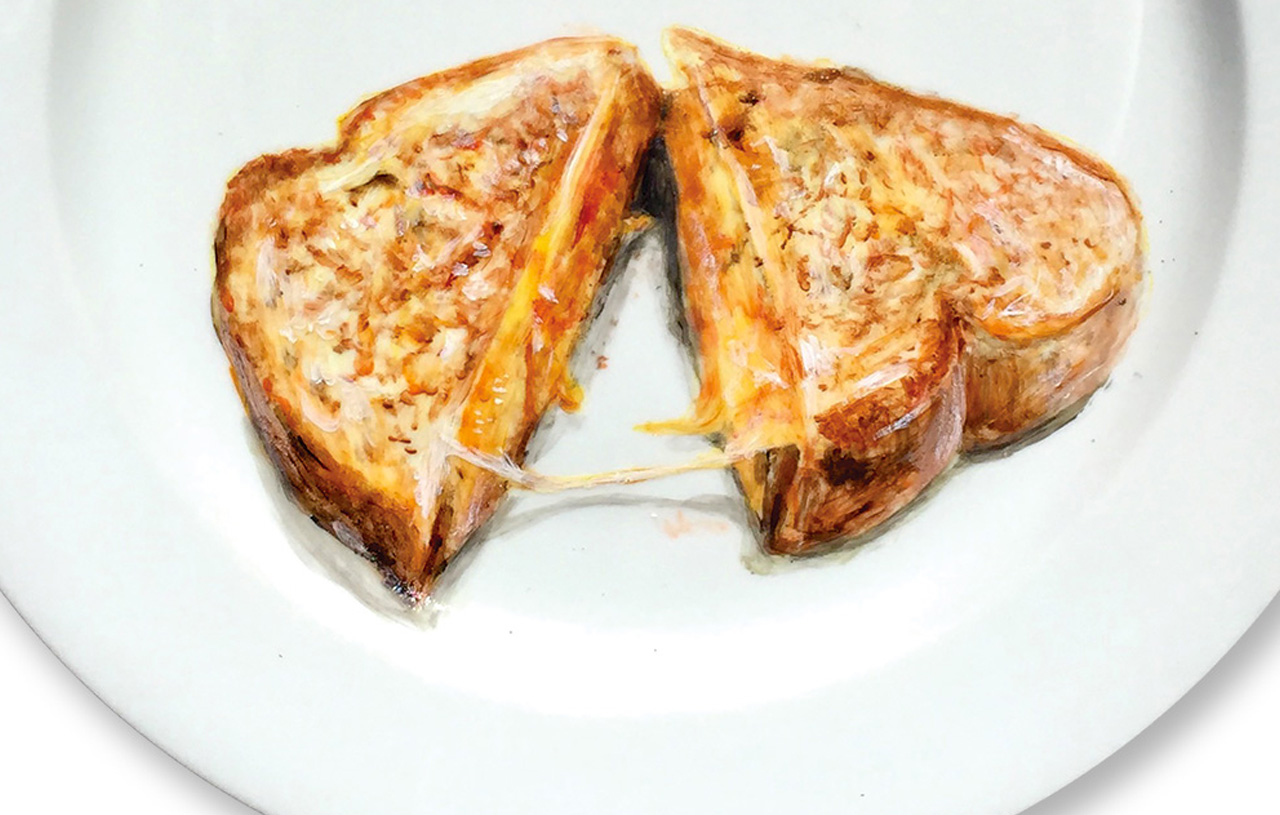
If you’re ever wondering what you can possibly talk about with people you are hosting for the first time for dinner, give Collingwood artist Jacqueline Poirier a call.
She’s a specialist in breaking the ice—no matter how formal, expensive or intimidating the dinner party.
And she doesn’t do it by teaching you which fork to use, or how to tell amusing stories.
She does it by hand-painting one-of-a-kind, white porcelain charger plates in crazily imaginative ways—hence her business name: The Crazy Plate Lady.
If you are imagining the stuffy painted porcelain that your Aunt Edna may have owned or tacky souvenir plates from royal events, forget about it.
In Poirier’s world, inspiration comes from what she sees, what she eats, and what she thinks and dreams about.
There’s the food that makes you hunger for more. Pizza on a dish—with one slice missing—or a pink doughnut with sprinkles and a bite out of it look so real you will want to eat them.
There are the actors, musicians and quirky scenes from movies and TV series, such as Lucy and Ethel from I Love Lucy or Jack Nicholson in his role as the very scary Jack Torrance in The Shining.
There are horses, dogs, cats and whimsical pigs flying off the plates or seemingly hanging off the rims. A mermaid swimming out of a plate looks like she might land on your lap.
And there are the gorgeous landscapes, so real that Poirier can hold a plate up to the scene she painted it from and it blends in. Or so surreal that you want to thank her for capturing your feelings about a Toronto skyline.
Once she created a place setting for eight people and each plate had a painting of a fish.
Another time she did a theme on Georgian Bay landscapes.
People sit down at the table and ask each other, “What’s your plate?” she says. “It really breaks the ice.”
Poirier has also created exclusive pieces of art for corporate clients, such as Molson, Samsung and the Toronto International Film Festival (TIFF).
One time, memorably, she was hired to create two boardroom tables set for a luncheon for the creative team at Facebook.
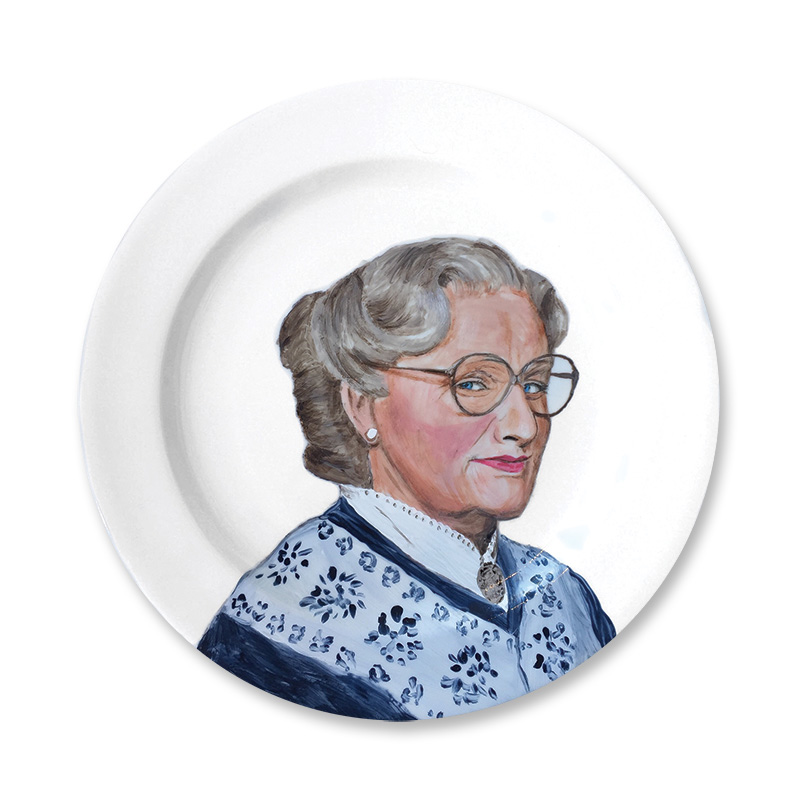

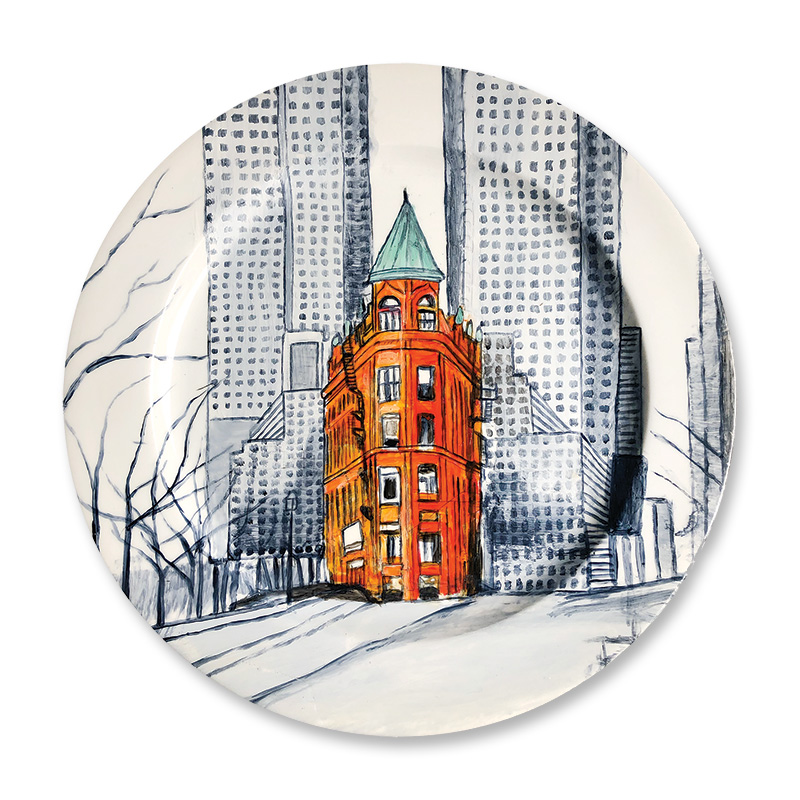
For one table she created a picnic setting with a red checkered tablecloth and fake fruits and vegetables placed in wicker baskets. Then she created charger plates with a different food on each of them—pizza, fruits, lollipops.
The second table was set with a white tablecloth, fake resin paint brushes and paint tins, and tiny figures that were holding pencils. She splashed the tablecloth with paints to make it look like the figures had painted the table. The charger plates were painted with sketches that looked like they’d been done by the figurines—with one consistent paint stroke through each plate and across the tablecloth between them to connect it all.
Poirier, who had originally painted with acrylics and oils on canvas, “didn’t plan to start off in this medium.”
How it happened is as good a tale as actress Lana Turner being discovered as she sat on a stool at a soda fountain sipping a beverage.
Poirier had graduated from the Ontario College of Art & Design but needed to earn some money to go on to teachers’ college.
So, she became a server at the upscale TOCA restaurant in Toronto’s Ritz-Carlton. After seeing her compete in a live painting competition, called Art Battle, a manager there asked if she had ever painted on porcelain, and suggested she take four charger plates home and try it. So, she painted four landscapes representing the four seasons in Canada.
Then she went back to work and set a table with the plates. “People stopped in their tracks,” she said. Then the hotel asked for 120—all different—to do all the place settings in the entire dining room.
She painted fruits and vegetables, moose and bears. “Each place setting was a conversation piece,” she says. “It became a hit.”
She started painting custom plates, and searched what was happening in the city for ideas.
For TIFF she painted some of the stars who were coming to town, such as Morgan Freeman, Halle Berry and Al Pacino. When Morgan Freeman came into TOCA for lunch and saw himself looking back from his charger plate, he had to have it. She now has a photograph, sent by his assistant, of Freeman with his plated portrait.
If that wasn’t enough on her plate, it all got bigger.
The hotel named her as its resident artist. The Toronto Star came to do a story. She got requests from guests for custom plates and calls from people who read about her in the media.
Then she was discovered by an Instagram community blogger and her work was posted on the site’s main page, where it received over 700,000 likes in one day. Her account blew up with 60,000 new followers. (She now has more than 85,000 followers.)
“It was amazing and terrifying,” says the mother of three young children, five, three and 18 months. “I was just doing this for the fun, not the money,” she says.
But now she needed some help, so she hired a studio manager, Leah LeBlanc.
Then she helped her studio manager get her foot in the door as a server at the Ritz-Carlton. And when the pandemic hit, they both decided to move up to the Georgian Triangle—Poirier to Collingwood and LeBlanc to Meaford.
It felt like home to Poirier. “My parents had a country place in Duntroon and on weekends we skied at Osler,” she says of her childhood.
Her mum now lives on Maple in Collingwood and her dad still goes to the cottage/chalet in Duntroon.
Meanwhile, Poirier and LeBlanc are still cooking together, so to speak.
Indeed, LeBlanc, her husband Andrew LeBlanc and a friend opened Bello Pizza in Collingwood last spring—a hip, cozy restaurant where you sometimes see Poirier serving customers.
Though Poirier never thought about painting charger plates before she was asked to, she looks back now and sees a certain connection between the dreams that inspired her university thesis and the medium she now immerses herself in.
At the time, she was doing a lot of abstract work. So she based her collection of large-scale abstract impressionist paintings on “really bizarre” recurring dreams she was having about approaching tornadoes.
To recreate the images from her dreams, she started using a “gestural brush stroke” with a mixture of acrylic and oil on canvas to capture the swirl of the funnel clouds.
Now, she says, “my medium is in a circular place.” Coincidence? She thinks not. “It was foreshadowing.”
